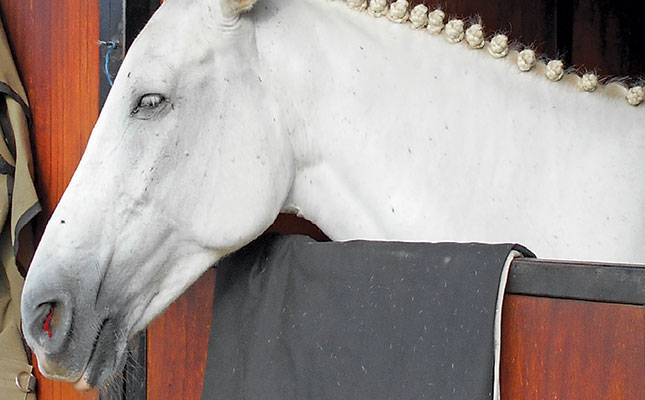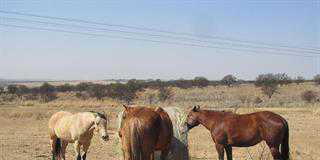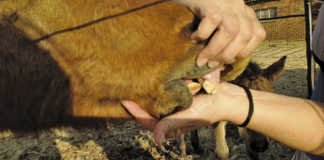
Photo: Dr Mac
Despite almost a third of racing Thoroughbreds showing some form of bleeding from the lungs after a race, a vet should be called if the horse has blood pouring from one or both nostrils after galloping at speed, as this could indicate an exercise-induced pulmonary haemorrhage.
READ Helping a horse recover from injury
It is not only Thoroughbred racehorses that suffer from nosebleeds. The condition has been seen in American Quarter Horses ridden in flat races or used for barrel racing, as well as breeds that compete in trotting races and other timed events.
Causes
Nosebleeds can be caused by respiratory infections, injuries, small polyps or tumours in the nostrils, accidental consumption of rat poison, and severe acute African horse sickness.
However, exercise-induced pulmonary haemorrhage occurs when a horse is galloped at full speed during a race.
Top racehorses have very large, powerful hearts. During racing, the heartbeat can exceed 200 beats per minute, causing very high blood pressure in the tiny capillary vessels in the lungs.
If these tiny vessels rupture, the blood goes into the alveoli of the lungs, and it is only when many capillaries or a larger blood vessel ruptures that sufficient blood is released and comes out of the nostrils.
Unfortunately, top racehorses that strive to win are probably more at risk, although even those that gallop more slowly can be bleeders.
Racing Arabians are also affected; however, those used for endurance riding are not.
Treatment and prevention
Each time there is bleeding into the lung tissue, inflammation and scarring occur. The more blood that is released, the more severe the damage. Once a horse has bled from the nostrils, there is a high risk that it will happen again.
Racehorses that bleed from one or both nostrils are rested to allow their lungs to heal. In South Africa, racehorses are not allowed to race for three months after a nosebleed.
If it recurs, the horse is rested for six months before being raced. If it occurs again, the horse has to retire from racing.
READ What is African horse sickness?
Treatment depends on cause. One important cause is ‘roaring’ (the partial paralysis of the larynx), and horses with this condition should not be galloped.
Respiratory infections or inflammations such as bronchitis or pneumonia should be diagnosed and treated by a vet, and the horse should be fully recovered before being galloped.
The underlying cause of this may be treated with corticosteroids, antibiotics and bronchodilators, as well as rest. In this case, stables must be sufficiently ventilated, feed and bedding must be dust free, and horses should be exercised or let out daily.
The only treatment that appears to help prevent exercise-induced pulmonary haemorrhage is the use of furosamide before a race. However, its use has been banned in all countries except the US and Canada.
Research is currently being conducted at the Equine Research Centre at the University of Pretoria to determine whether furosamide actively reduces this condition in racehorses, or whether it just decreases the horse’s body weight through promoting the loss of body fluids.
For more information, visit up.ac.za.
Dr Mac is an academic, a practising equine veterinarian and a stud owner.













